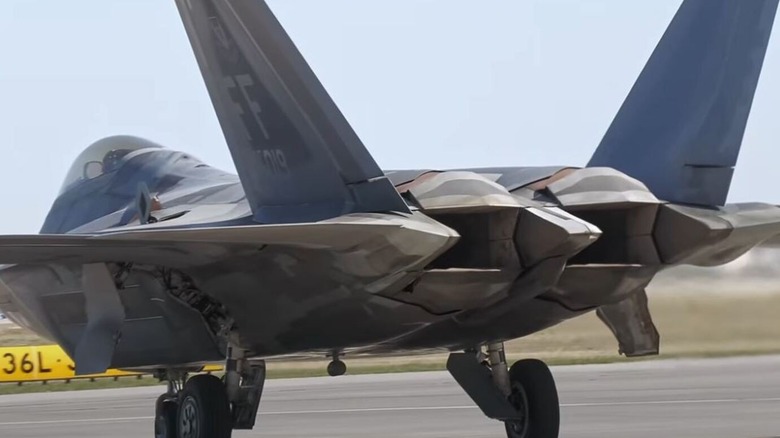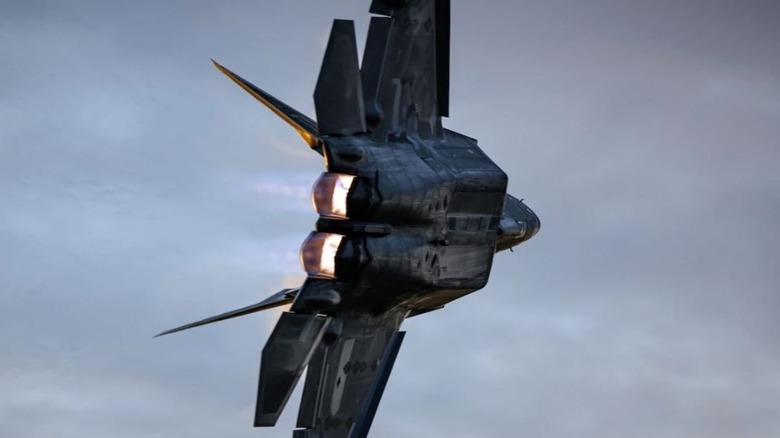Why Does The F22 Raptor Have Rectangular Exhaust Nozzles?
As one of the world's most powerful fighter aircraft currently in service, the F-22 Raptor is a marvel of technological achievement. Made from some of the most advanced and durable metals and material composites, the F-22 combines its impressive hardware with cutting-edge electronic communication, navigation, sensors, and warfare systems that further improve its effectiveness during combat. Created for air superiority, the F-22 is unequaled in its speed, stealth, and agility. To achieve its high speed and supermaneuvrability, it is equipped with the most powerful engine on a jet fighter, and a unique set of rectangular nozzles, which aids in stealth and is a vital component of its thrust vectoring system.
The two key reasons why the F-22 uses rectangular nozzles instead of the regular round-shaped ones are to help maximize its stealth and to facilitate thrust vectoring. The advantage of rectangular-shaped nozzles is that it helps reduce the jet's heat signature by minimizing the exhaust plume length. In addition, the swept-back, parallel, and hard-edged design of the nozzle edges also helps decrease the overall radar signature of the aircraft, making it stealthy even from a rear angle.
In addition to helping it maintain its stealth, the rectangular nozzles' main function is to provide thrust vectoring for the F-22 Raptor. These nozzles are mated to the engine and are categorized as two-dimensional because it can be controlled by the pilot to move up to 20 degrees up or down. The nozzles are directly integrated into the Raptors' control system, using Full-Authority Digital Electronic Control (FADEC), and it does not need additional input to work, as it will work in tandem with the control surfaces like the rudders, flaps, and elevators.
Different shape with many uses
Thrust vectoring is the ability of an aircraft to alter the direction of its engine thrust. This allows the aircraft to perform more aggressive maneuvers, pull tighter turns, and change direction faster, which is important at lower speeds when its control surfaces may not be as effective. Thrust vectoring is important for fighter jets because it increases its agility to help avoid attacks and execute intricate combat maneuvers. Alongside the F-22, only a few aircraft have thrust vectoring capability, including its Russian competitor, the still-in-production Sukhoi Su-57.
Because each of the two F119 Pratt and Whitney engines on the F-22 is capable of 35,000 pounds of thrust, and a jet engine's exhaust temperature can reach more than 1000 degrees Celsius, its exhaust nozzles are made to be incredibly strong. To cope with the extremely high temperatures and pressures of its exhaust gases, the nozzles of the F-22 Raptor are made of titanium. Because of its inherent durability, corrosion resistance, and ability to withstand heat, titanium is normally utilized for the demanding requirements of jet engines.
First entering service for the United States Air Force in 2005, the F-22 Raptor, after two decades, remains the number one fighter jet in America's aircraft fleet. Despite its numerous performance advantages, and an earlier plan for it to replace the F-15 eagle, the F-22 only had a short production run, and today, its successor, the F-47, is in active development. Though it is no longer made, the lessons learnt from the F-22 program can be applied to existing aircraft and for its 6th-generation replacement, where it can address its shortcomings, and build upon its strengths to create an even better and more dominant fighter jet.

